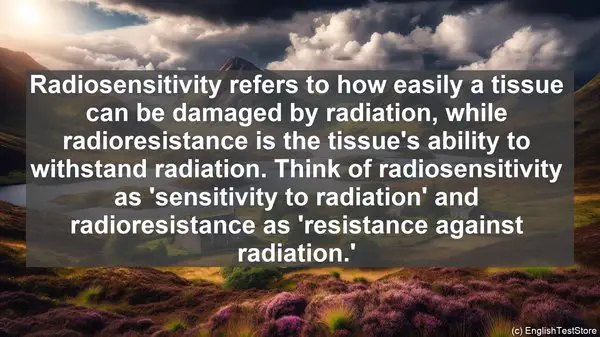Introduction
Welcome to our radiation therapy series. Today, we’ll be discussing the top 10 commonly confused words in this field. Understanding these terms is essential for accurate communication and patient care. So, let’s dive in!
1. Dose vs. Dosage
Dose refers to the amount of radiation received, while dosage is the frequency or timing of the dose. Remember, dose is the ‘amount,’ and dosage is the ‘schedule.’

2. Radiosensitivity vs. Radioresistance
Radiosensitivity refers to how easily a tissue can be damaged by radiation, while radioresistance is the tissue’s ability to withstand radiation. Think of radiosensitivity as ‘sensitivity to radiation’ and radioresistance as ‘resistance against radiation.’
3. Isodose vs. Isocenter
Isodose refers to a line connecting points receiving the same radiation dose, while isocenter is the point where the radiation beams intersect. Isodose is about ‘dose distribution,’ and isocenter is about ‘beam intersection.’

4. Brachytherapy vs. Teletherapy
Brachytherapy involves placing a radiation source directly inside the body, while teletherapy delivers radiation from an external machine. Brachytherapy is ‘internal,’ and teletherapy is ‘external.’
5. Fractionation vs. Hypofractionation
Fractionation is dividing the total radiation dose into smaller, equally effective doses, while hypofractionation is delivering larger doses per session. Fractionation is about ‘dividing,’ and hypofractionation is about ‘larger doses.’
6. Conformal vs. Intensity-Modulated Radiation Therapy (IMRT)
Conformal therapy shapes the radiation beams to match the tumor’s shape, while IMRT varies the radiation intensity within each beam. Conformal therapy is about ‘beam shaping,’ and IMRT is about ‘intensity variation.’
7. Gray (Gy) vs. Sievert (Sv)
Gray (Gy) measures the absorbed radiation dose, while Sievert (Sv) takes into account the biological effects of different types of radiation. Gray is about ‘absorbed dose,’ and Sievert is about ‘biological effects.’
8. Linear Accelerator (Linac) vs. Cobalt-60 Machine
A linear accelerator (Linac) uses electricity to produce radiation, while a cobalt-60 machine uses radioactive cobalt as the radiation source. Linac is ‘electric,’ and cobalt-60 is ‘radioactive.’
9. CT Simulation vs. Treatment Planning
CT simulation involves obtaining images for treatment planning, while treatment planning is the process of determining the radiation dose and delivery technique. CT simulation is about ‘imaging,’ and treatment planning is about ‘dose determination.’
10. Acute vs. Chronic Side Effects
Acute side effects occur during or shortly after treatment, while chronic side effects develop over time. Acute is ‘immediate,’ and chronic is ‘long-term.’
